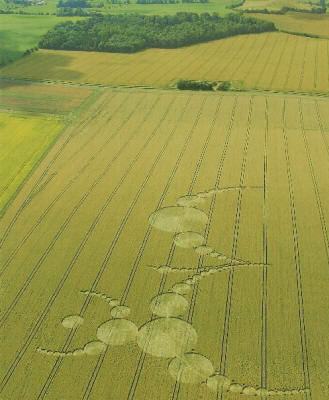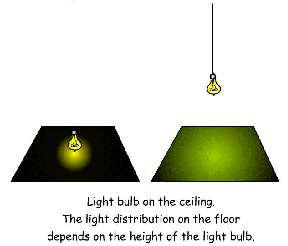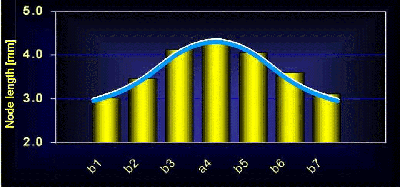|
2007 from GoldenAgeToday Website
Winston Keech, an engineer and inventor, describes his first
encounter with a crop circle being created at the now-famous "East
Field" in Wiltshire, UK. Keech explains that he was in the field late at night hoping to witness a UFO creating a crop circle, but instead he says he was acutely aware of an "almost taunting, slightly child-like consciousness" pervading the field.
Keech said that he felt like he
was being observed and he described the feeling as "intense". He
said he was actually able to see a small illuminated disk in the
corner of his eye, leisurely floating above the corn, but he could
not see it if he tried to look straight at it.
RELATED
from YouTube Website
by Eltjo Haselhoff 31 July, 2001 from SwirledNews Website
This article explains the essential elements of these studies in simple terms.
Figure 1
In the early 1990s, the American biophysicist William Levengood discovered that plants inside crop circles often had much longer nodes than those in the undisturbed, surrounding crop.
This effect is illustrated in Figure 2. Figure 2
Although there are known biological effects that can create node lengthening, these could be easily ruled out.
It was clear that something else had happened.
The effect
could be simulated by placing normal, healthy stems inside a
microwave oven. The heat induced by the microwaves made the liquids
inside the nodes expand, just like the mercury inside a thermometer.
This caused the nodes to increase in length, while the amount of
lengthening increased proportionally to the amount of microwave
energy that was generated.
In fact, traces of heat have been found
innumerable times in crop circles all over the world, such as
dehydrated plants, burn marks, and molten snow.
Sized somewhere between an egg and a football, these bright, fluorescent, flying light objects seem to be somehow related to the crop circle phenomenon. They often appear in the fields during the night a crop circle forms, and have been seen (and filmed!) many times in and around crop circles.
Several persons have even claimed that
they witnessed how these balls of light actually created a crop
circle.
The authors presented a ‘quantitative
analysis’; in other words, the article tried to explain the AMOUNT
of node lengthening throughout the crop circle, by means of physical
models. The authors concluded that the heat (that had made the nodes
swell) was electromagnetic in origin.
The paper reinterpreted the data published by Levengood and Talbott and showed that the node lengthening as measured in all three crop circles could be perfectly explained by assuming that a ‘ball of light’ had caused the node swelling effect.
An identical analysis performed on a famous
man-made formation (Dreischor, Holland, 1997) did not show these
characteristics at all.
When the light bulb is hanging very low, almost touching the floor, the floor underneath the light bulb will be very bright, but the intensity will rapidly become less as you move away from it (Figure 3).
Figure 3
When the light is hanging high on the
ceiling, however, the light intensity underneath the light will be
much less and be more evenly distributed over the floor (see Figure
3). Because this mechanism is so well known, one can actually derive
the height of the light bulb after measuring the light distribution
on the floor.
As explained above, the swollen nodes inside the crop circles may be thought of as many little thermometers, expanding their length with increasing heat.
If one assumes that the heat was induced
by a small spherical shape emitting electromagnetic radiation, the
theoretical heat distribution on the floor can be accurately
determined (similarly to the case of the light bulb, as discussed
above). I demonstrated that the measured node lengths in all of the
three crop circles studies by Levengood and Talbott perfectly
matched the temperature distribution that would be caused by a small
ball of light, hanging in the air above the centre of the circles,
emitting intense heat.
Figure 4 shows the results.
Figure 4
The yellow bars indicate the average node length measured at seven different locations across the crop circle, from one edge (position b1), through the centre (a4), to the opposite edge (b7). Note the perfect symmetry, which is remarkable!
Similar graphs were obtained from two
different cross sections through the circle, revealing a perfect
circular symmetry: long nodes towards the centre of the circle,
shorter nodes towards the edges.
Therefore, it is fair to say that recent
scientific findings have established considerable progress in
understanding the crop circle phenomenon, although many questions
still remain unanswered.
Video One of the more interesting videos concerning crop circles may be seen in this documentary from the U.K..
The producers interviewed physicist Dr. Eltjo Haselhoff of the Netherlands. Dr. Haselhoff offers scientific proof that at least some crop circles are indeed formed by balls of light.
His research and evidence was even accepted after peer review for the internationally recognized scientific journal, Physiologia Plantarum.
Lights Forming Crop Cirlces
|





